Abstract
In order to understand why non-atopic people do not have adverse symptoms to food antigens which enter the circulation after eating, 8 non-atopic and 10 atopic eczema- and milk-allergic subjects were challenged with milk, and the types of circulating immune complexes formed were analysed. Although the amount of beta-lactoglobulin incorporated into complexes did not differ statistically between the groups, the type of immune complex did. Of the non-atopic individuals, 5 formed IgA and 2 IgG complexes. Of the milk-allergic group, all showed a rise in at least one type; 5 formed IgA, 7 IgG, 6 IgE, and 6 formed C1q-binding complexes. Our data suggest that serum IgA is concerned in safe food antigen handling in non-atopic people, and that the differences in the type of immune complexes formed in response to antigen challenge may underlie the systemic symptoms of food allergy.
Full text
PDF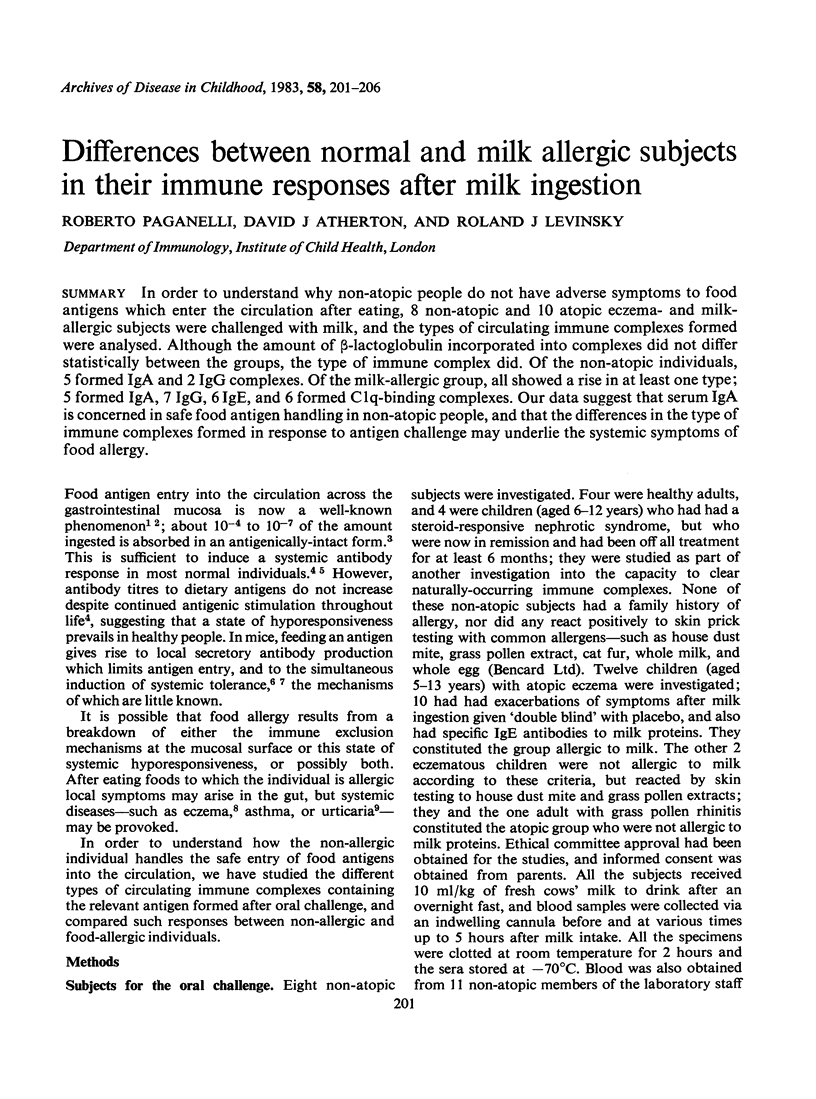
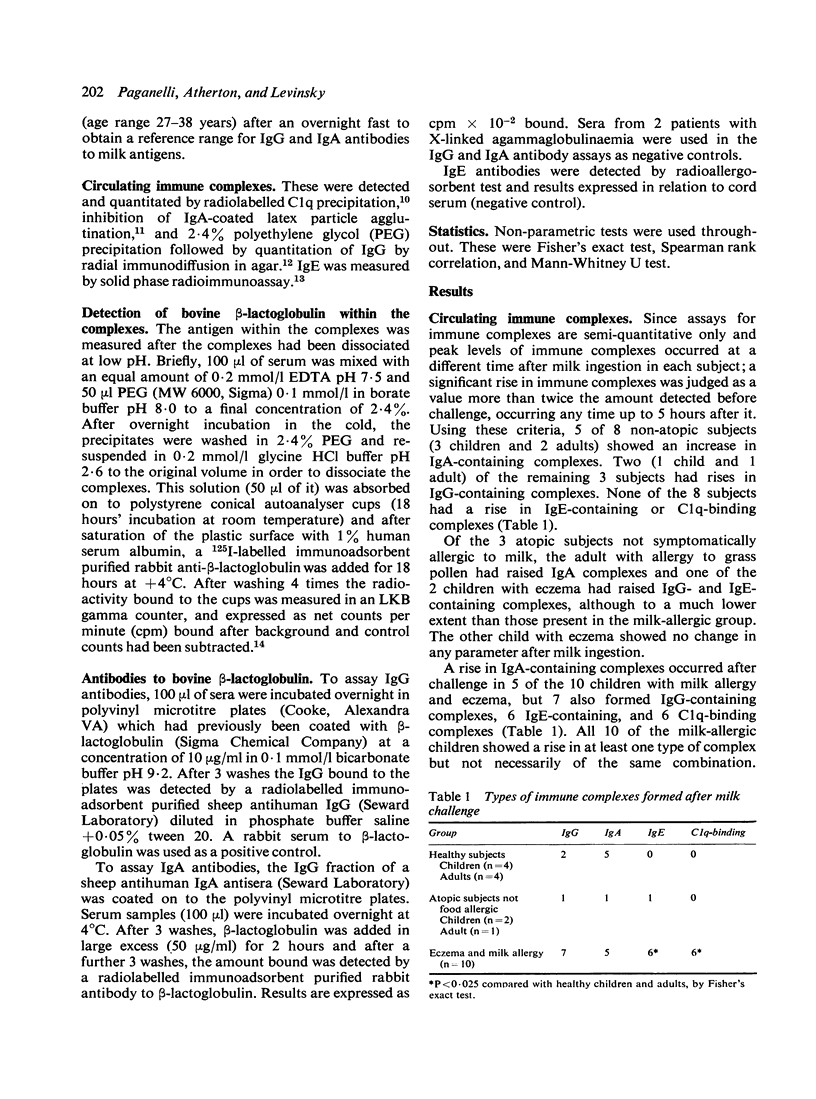
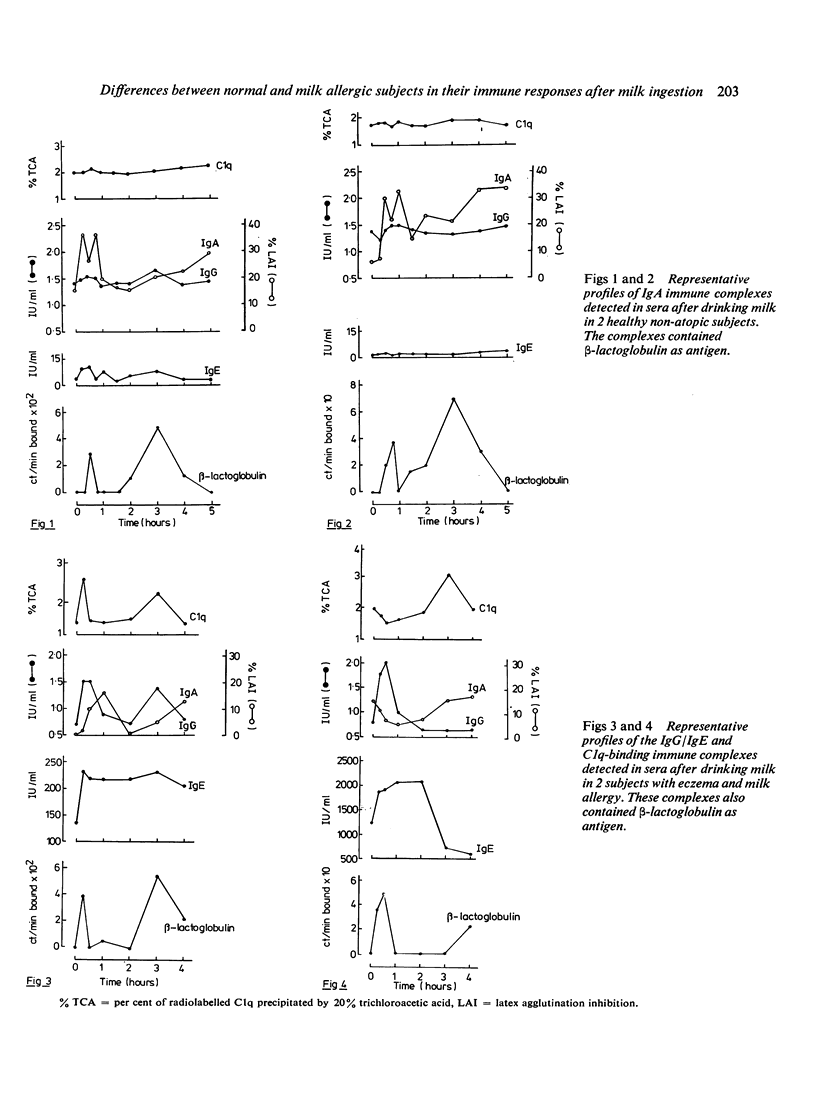
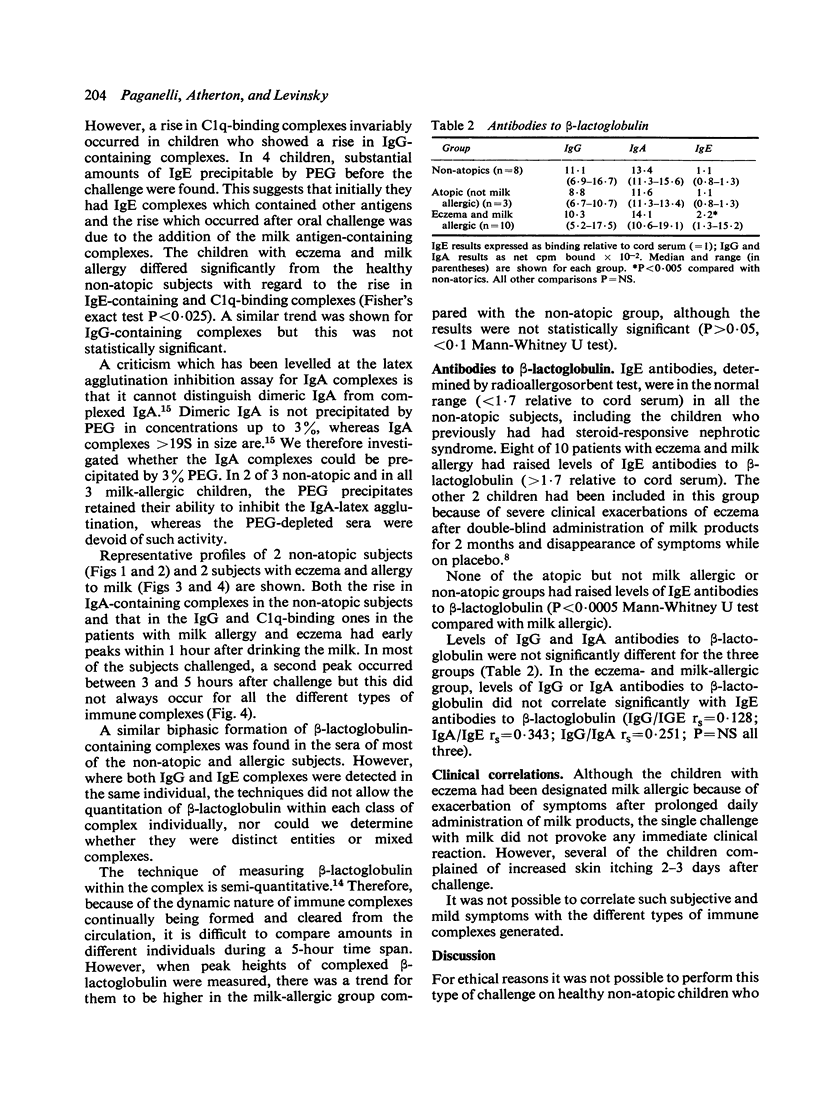
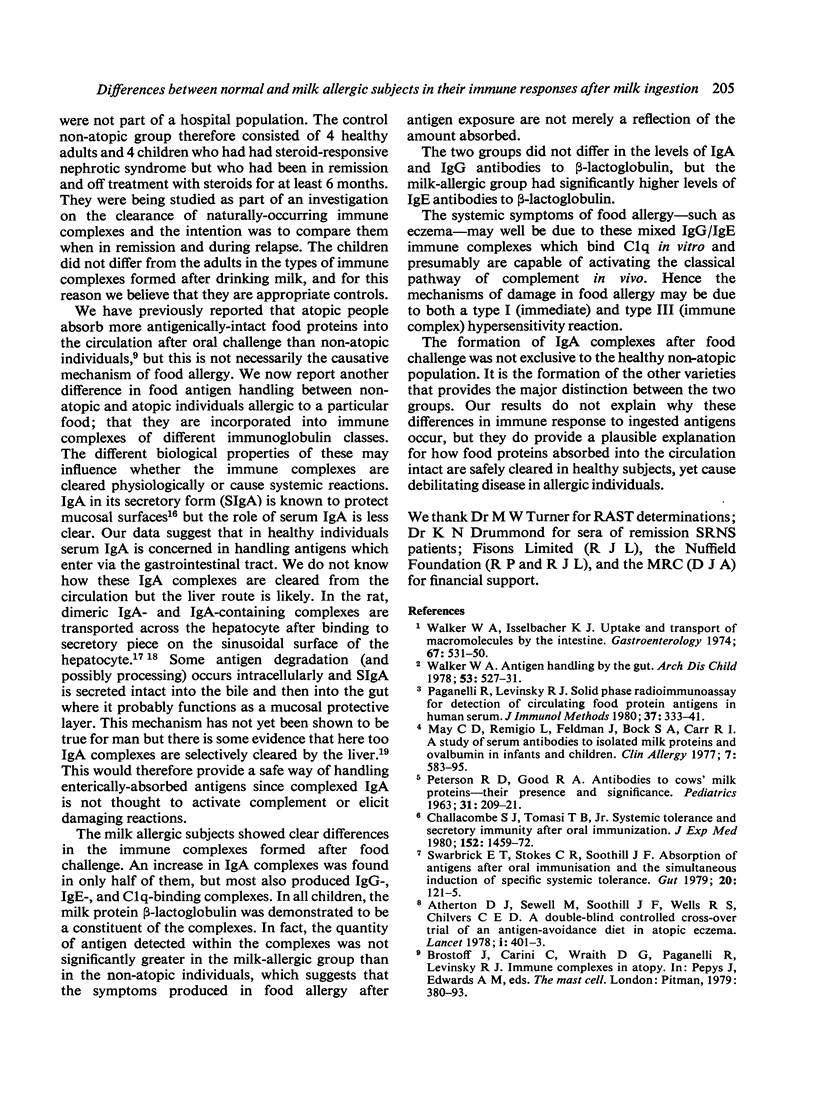
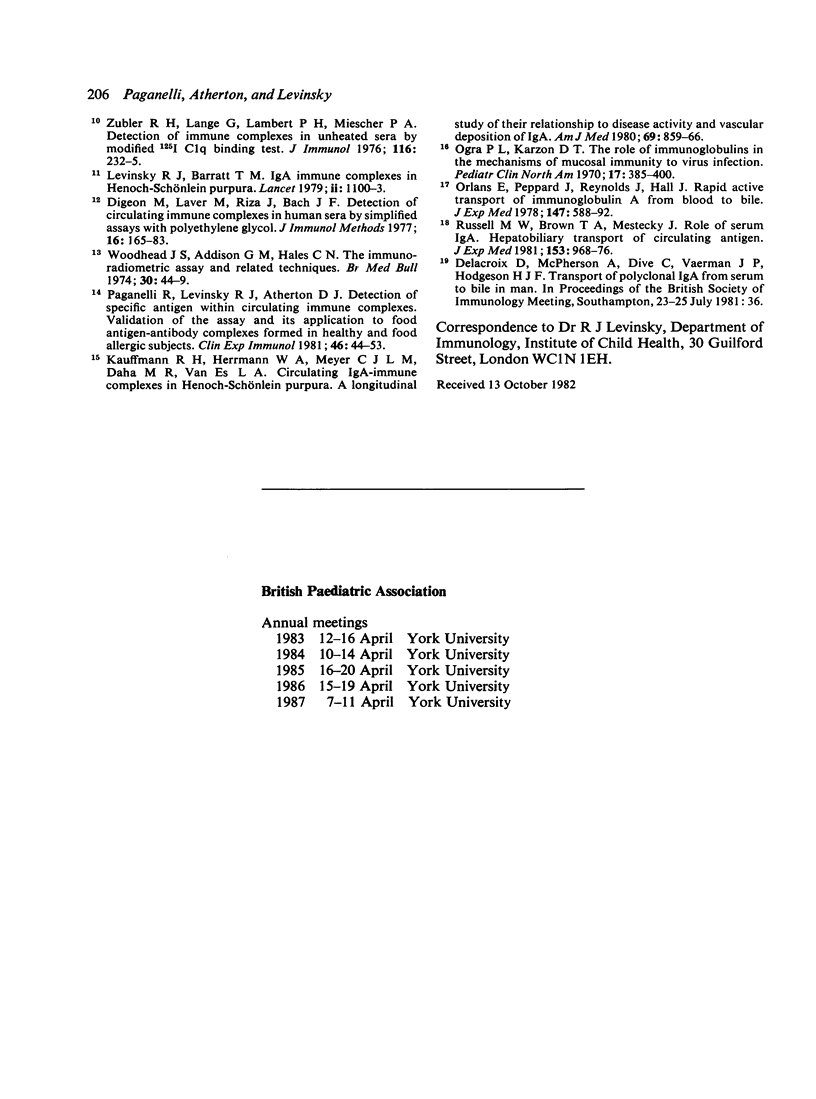
Selected References
These references are in PubMed. This may not be the complete list of references from this article.
- Atherton D. J., Sewell M., Soothill J. F., Wells R. S., Chilvers C. E. A double-blind controlled crossover trial of an antigen-avoidance diet in atopic eczema. Lancet. 1978 Feb 25;1(8061):401–403. doi: 10.1016/s0140-6736(78)91199-6. [DOI] [PubMed] [Google Scholar]
- Challacombe S. J., Tomasi T. B., Jr Systemic tolerance and secretory immunity after oral immunization. J Exp Med. 1980 Dec 1;152(6):1459–1472. doi: 10.1084/jem.152.6.1459. [DOI] [PMC free article] [PubMed] [Google Scholar]
- Digeon M., Laver M., Riza J., Bach J. F. Detection of circulating immune complexes in human sera by simplified assays with polyethylene glycol. J Immunol Methods. 1977;16(2):165–183. doi: 10.1016/0022-1759(77)90051-5. [DOI] [PubMed] [Google Scholar]
- Kauffmann R. H., Herrmann W. A., Meÿer C. J., Daha M. R., Van Es L. A. Circulating IgA-immune complexes in Henoch-Schönlein purpura. A longitudinal study of their relationship to disease activity and vascular deposition of IgA. Am J Med. 1980 Dec;69(6):859–866. doi: 10.1016/s0002-9343(80)80011-8. [DOI] [PubMed] [Google Scholar]
- Levinsky R. J., Barratt T. M. IgA immune complexes in Henoch-Schönlein purpura. Lancet. 1979 Nov 24;2(8152):1100–1103. doi: 10.1016/s0140-6736(79)92505-4. [DOI] [PubMed] [Google Scholar]
- May C. D., Remigio L., Feldman J., Bock S. A., Carr R. I. A study of serum antibodies to isolated milk proteins and ovalbumin in infants and children. Clin Allergy. 1977 Nov;7(6):583–595. doi: 10.1111/j.1365-2222.1977.tb01489.x. [DOI] [PubMed] [Google Scholar]
- Ogra P. L., Karzon D. T. The role of immunoglulins in the mechanism of mucosal immunity to virus infection. Pediatr Clin North Am. 1970 May;17(2):385–400. doi: 10.1016/s0031-3955(16)32417-8. [DOI] [PubMed] [Google Scholar]
- Orlans E., Peppard J., Reynolds J., Hall J. Rapid active transport of immunoglobulin A from blood to bile. J Exp Med. 1978 Feb 1;147(2):588–592. doi: 10.1084/jem.147.2.588. [DOI] [PMC free article] [PubMed] [Google Scholar]
- PETERSON R. D., GOOD R. A. Antibodies to cow's milk proteins. Their presence and significance. Pediatrics. 1963 Feb;31:209–221. [PubMed] [Google Scholar]
- Paganelli R., Levinsky R. J., Atherton D. J. Detection of specific antigen within circulating immune complexes: validation of the assay and its application to food antigen-antibody complexes formed in healthy and food-allergic subjects. Clin Exp Immunol. 1981 Oct;46(1):44–53. [PMC free article] [PubMed] [Google Scholar]
- Paganelli R., Levinsky R. J. Solid phase radioimmunoassay for detection of circulating food protein antigens in human serum. J Immunol Methods. 1980;37(3-4):333–341. doi: 10.1016/0022-1759(80)90319-1. [DOI] [PubMed] [Google Scholar]
- Russell M. W., Brown T. A., Mestecky J. Role of serum IgA. Hepatobiliary transport of circulating antigen. J Exp Med. 1981 Apr 1;153(4):968–976. doi: 10.1084/jem.153.4.968. [DOI] [PMC free article] [PubMed] [Google Scholar]
- Swarbrick E. T., Stokes C. R., Soothill J. F. Absorption of antigens after oral immunisation and the simultaneous induction of specific systemic tolerance. Gut. 1979 Feb;20(2):121–125. doi: 10.1136/gut.20.2.121. [DOI] [PMC free article] [PubMed] [Google Scholar]
- Walker W. A. Antigen handling by the gut. Arch Dis Child. 1978 Jul;53(7):527–531. doi: 10.1136/adc.53.7.527. [DOI] [PMC free article] [PubMed] [Google Scholar]
- Walker W. A., Isselbacher K. J. Uptake and transport of macromolecules by the intestine. Possible role in clinical disorders. Gastroenterology. 1974 Sep;67(3):531–550. [PubMed] [Google Scholar]
- Woodhead J. S., Addison G. M., Hales C. N. Radioimmunoassay and saturation analysis. The immunoradiometric assay and related techniques. Br Med Bull. 1974 Jan;30(1):44–49. doi: 10.1093/oxfordjournals.bmb.a071166. [DOI] [PubMed] [Google Scholar]
- Zubler R. H., Lange G., Lambert P. H., Miescher P. A. Detection of immune complexes in unheated sera by modified 125I-Clq binding test. Effect of heating on the binding of Clq by immune complexes and application of the test to systemic lupus erythematosus. J Immunol. 1976 Jan;116(1):232–235. [PubMed] [Google Scholar]


